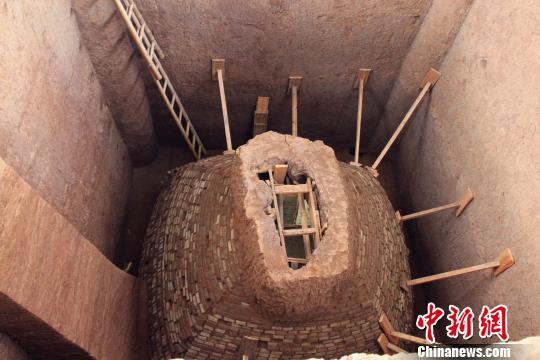CCTV.com
Source - http://english.cntv.cn/2014/11/22/VIDE1416656537138741.shtml?
Legendary Chinese artist Han Huang is best known for the "The Painting of Five cows", one of ten most significant scroll paintings in Chinese history.
The tomb of Han's father, who was a scholar and prime minister during the Tang dynasty, was recently discovered in the suburbs of Xi'an. Inside it was a vast collection of exquisitely painted murals that is shedding new light on the life of someone who was often left in the shadow of his legendary son.
The tomb, belonged to Han Xiu, a writer and prime minister during the eighth century. Filled with a vast treasure trove of exquisite art, the works enclosed in the tomb fit the title of someone as powerful as Han Xiu. Archaeologists say one of the landscape murals marks the rise of Tang dynasty ink paintings.


Chinese ink paintings line the walls of ancient tomb.
"On the mural, there's rivers, mountains, a pavilion and the sun," said Liu Daiyun,a scholar from Shanxi Institute of Archaeology.
"Seen from the layout and the strokes, we can say landscape painting had achieved maturity during Tang dynasty."
It was previously believed that Chinese ink painting did not achieve maturity until the Northern Song dynasty some 200 years later.
But this discovery has shown that the art form had reached maturity two centuries earlier than previously thought. Another mural inside the tomb, depicting singing and dancing scenes, also presents a vivid image of China's ancient art world.
"Normally, we found murals inside a tomb with only one band performing or one person dancing," Liu said. "But this time we've found two bands depicted on one mural, one female and one male band. And there's two people dancing opposite of each other."
VIDEO